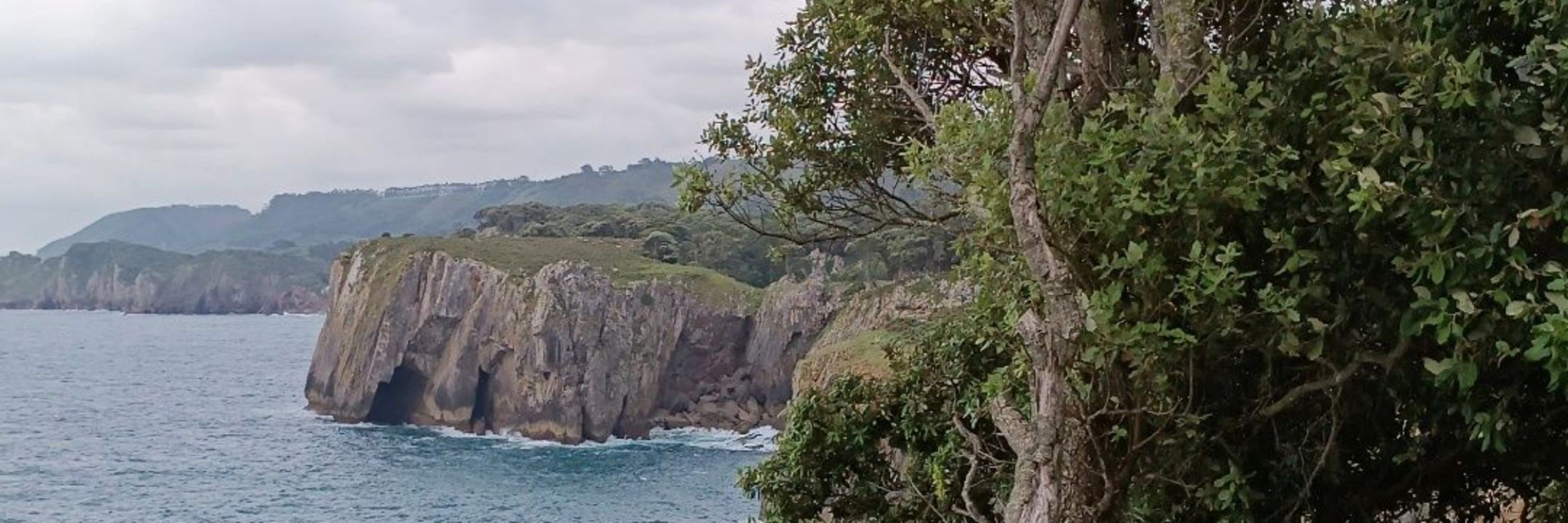
https://www.researchgate.net/profile/Victor-Gonzalez-Garcia-2

onlinelibrary.wiley.com/doi/10.1111/...
Join us to explore how vegetation shapes #biodiversity and ecosystems worldwide!
📅 Call for Special Session proposals is now open: 15 Oct – 15 Nov 2025
👉 Details: gijon2026.iavs-meetings.org
#IAVS2026

Join us to explore how vegetation shapes #biodiversity and ecosystems worldwide!
📅 Call for Special Session proposals is now open: 15 Oct – 15 Nov 2025
👉 Details: gijon2026.iavs-meetings.org
#IAVS2026
Just published in Landscape and Urban Planning at
www.sciencedirect.com/science/arti...
In this study we developed a novelty index by comparing plant, fungal and bacterial communities in urban and natural habitats.
@sebot.bsky.social @uodivulga.bsky.social

Just published in Landscape and Urban Planning at
www.sciencedirect.com/science/arti...
In this study we developed a novelty index by comparing plant, fungal and bacterial communities in urban and natural habitats.
@sebot.bsky.social @uodivulga.bsky.social
Full results coming soon at #BES2025 this December 🌱

Full results coming soon at #BES2025 this December 🌱
@sebot.bsky.social


@sebot.bsky.social


Just published in Mediterranean Botanty at
revistas.ucm.es/index.php/MB...
In this study we focused on the orchid diversity of the Principality of Asturias (NW Spain) and the drivers behind such diversity.
Just published in Mediterranean Botanty at
revistas.ucm.es/index.php/MB...
In this study we focused on the orchid diversity of the Principality of Asturias (NW Spain) and the drivers behind such diversity.
Just published in Plant Biology available at onlinelibrary.wiley.com/doi/10.1111/...
We explored the functional trade-offs and ecological correlates of seed oil traits by examining seed oil patterns in 47 alpine species. (1/5)
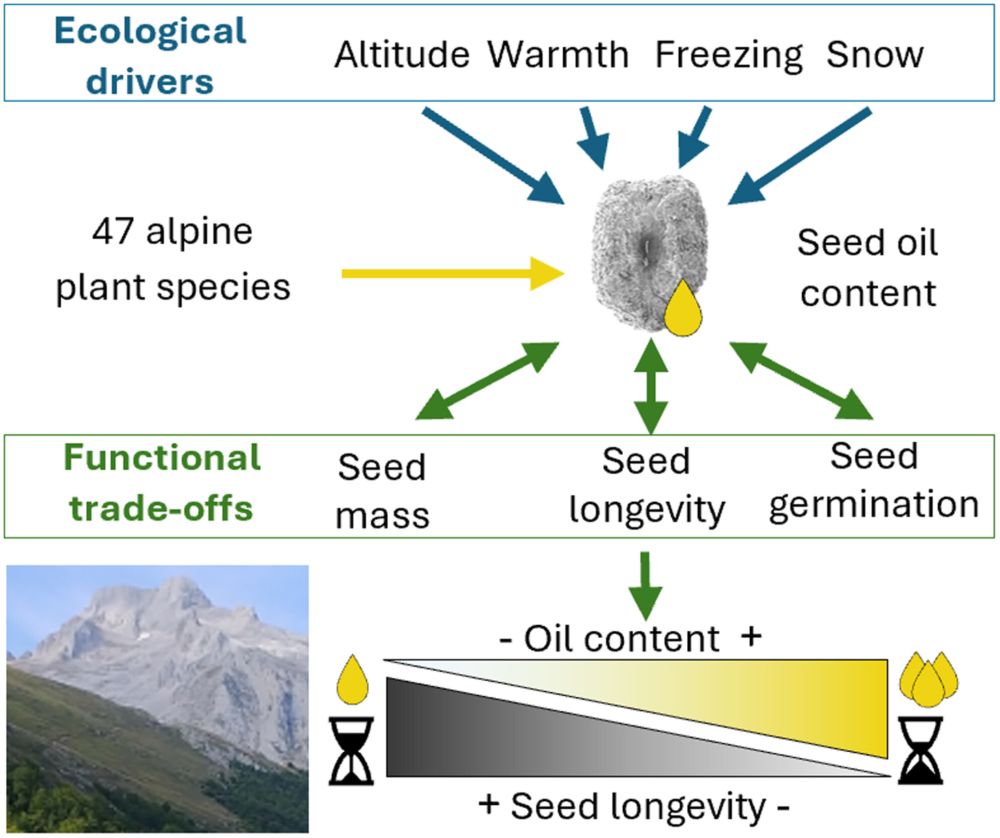
Just published in Plant Biology available at onlinelibrary.wiley.com/doi/10.1111/...
We explored the functional trade-offs and ecological correlates of seed oil traits by examining seed oil patterns in 47 alpine species. (1/5)
▶️ doi.org/10.1093/aob/... 👇
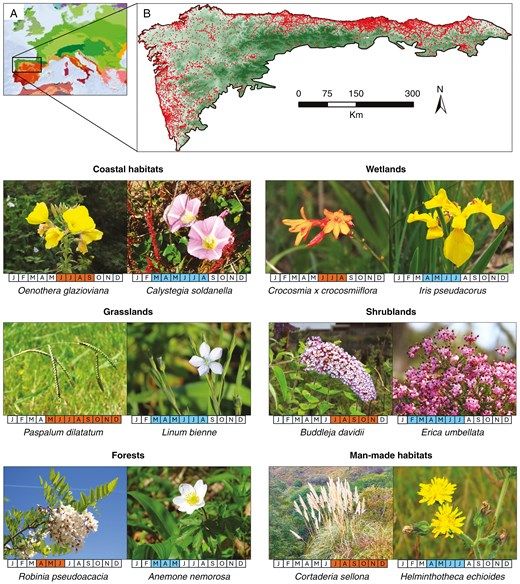
▶️ doi.org/10.1093/aob/... 👇
www.researchgate.net/publication/...

www.researchgate.net/publication/...
These ferns are more typical from tropical and subtropical regions, like Macaronesia.
Yet, they have survived to several climatic shifts and thrive in humid and warm valleys close to the coast, like Nueva, in Llanes.
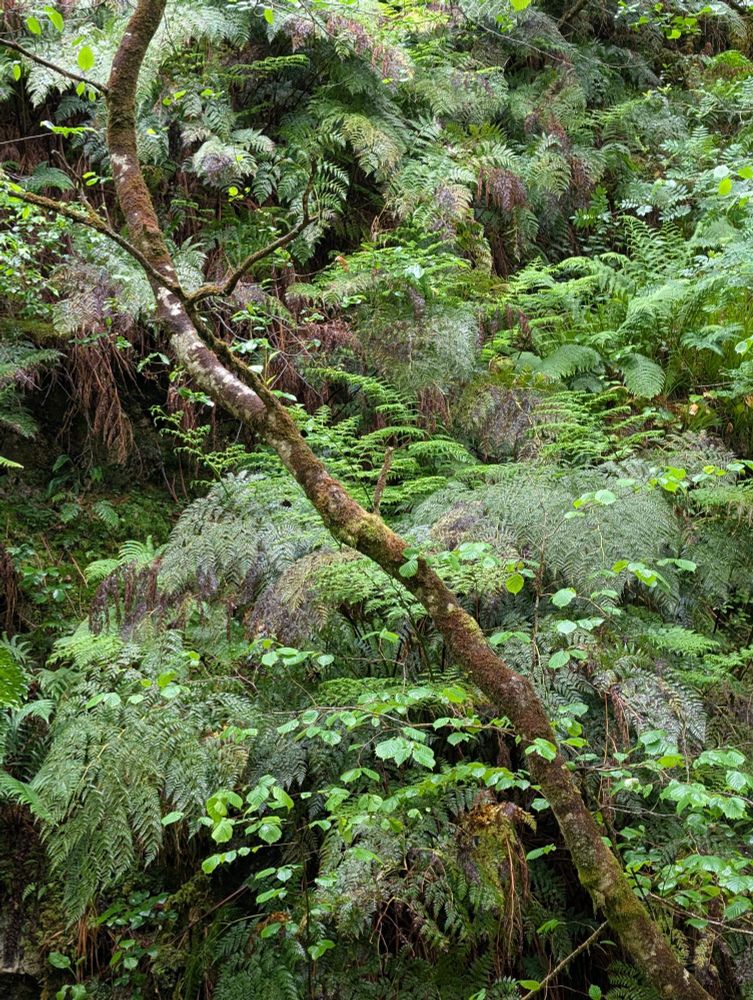



These ferns are more typical from tropical and subtropical regions, like Macaronesia.
Yet, they have survived to several climatic shifts and thrive in humid and warm valleys close to the coast, like Nueva, in Llanes.
👉 doi.org/ppkm
#AoBpapers #PlantScience

👉 doi.org/ppkm
#AoBpapers #PlantScience
@sebot.bsky.social @sebicop.bsky.social

@sebot.bsky.social @sebicop.bsky.social
We have launched a new online map of vegetation plots in the European Vegetation Archive (EVA) and ReSurveyEurope database. You can select plots using a filtering form or drawing an area in the map, explore plot metadata and export lists of selected plots with metadata.
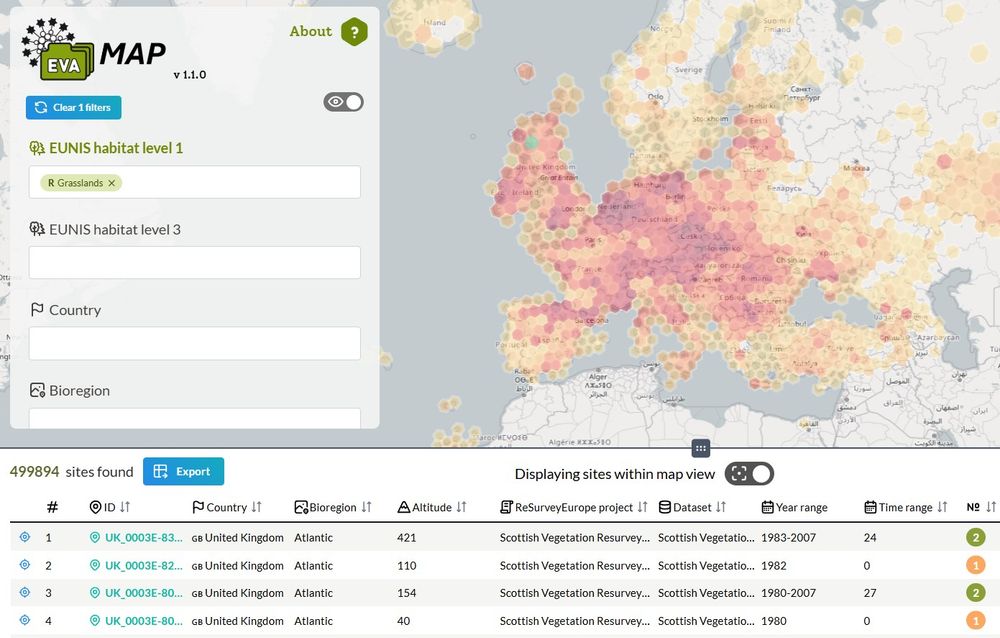
We have launched a new online map of vegetation plots in the European Vegetation Archive (EVA) and ReSurveyEurope database. You can select plots using a filtering form or drawing an area in the map, explore plot metadata and export lists of selected plots with metadata.


📚 Read more in our full study: onlinelibrary.wiley.com/doi/epdf/10....
#Macroecology #Biodiversity #Conservation #PinusNigra #NonNativeForests
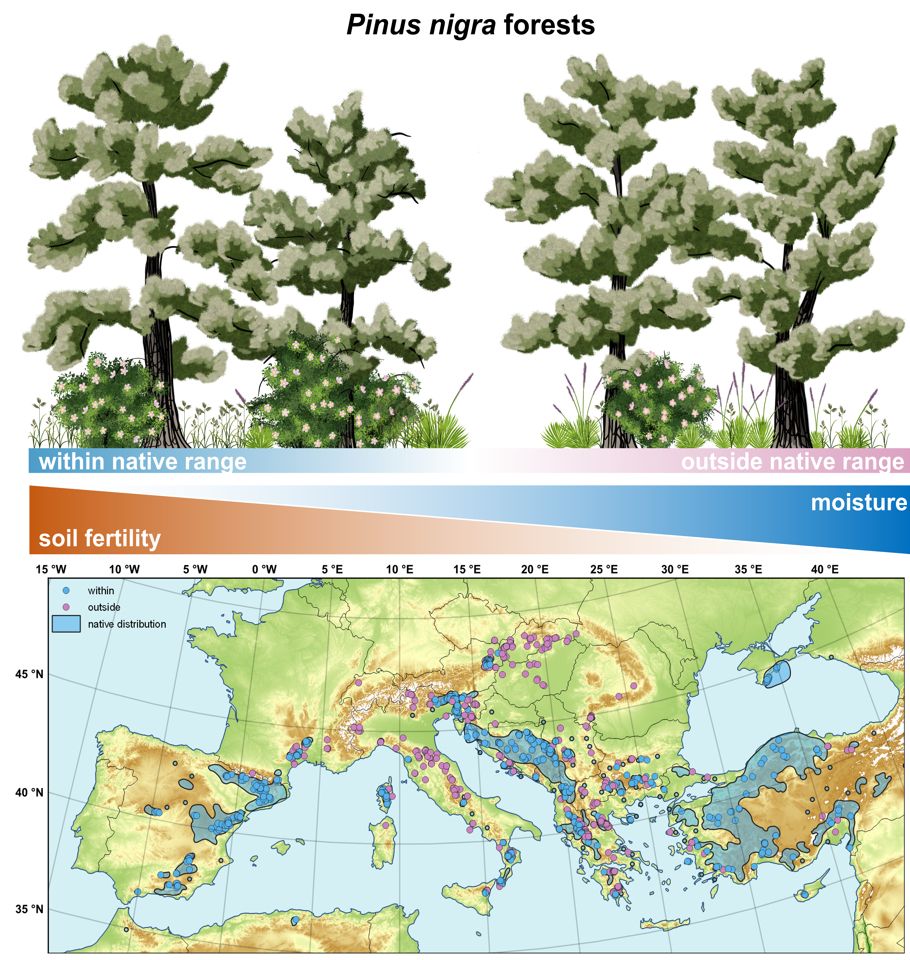
📚 Read more in our full study: onlinelibrary.wiley.com/doi/epdf/10....
#Macroecology #Biodiversity #Conservation #PinusNigra #NonNativeForests

Roberto Venanzoni removes seedlings of Trachycarpus fortunei, an East Asian palm, from flower beds with native plants in central Italy. The massive spread of this non-native palm and other evergreen plants (laurophyllization) in southern Europe is supported by global warming.

Roberto Venanzoni removes seedlings of Trachycarpus fortunei, an East Asian palm, from flower beds with native plants in central Italy. The massive spread of this non-native palm and other evergreen plants (laurophyllization) in southern Europe is supported by global warming.

In our latest research we studied its westernmost populations, located in Asturias (NW Spain), trying to understand its distribution and potential threats.
www.researchgate.net/publication/...

In our latest research we studied its westernmost populations, located in Asturias (NW Spain), trying to understand its distribution and potential threats.
www.researchgate.net/publication/...
Lo dice bien claro hoy mi compañero @natcantabrica.bsky.social en una entrevista @elpais.com
elpais.com/clima-y-medi...
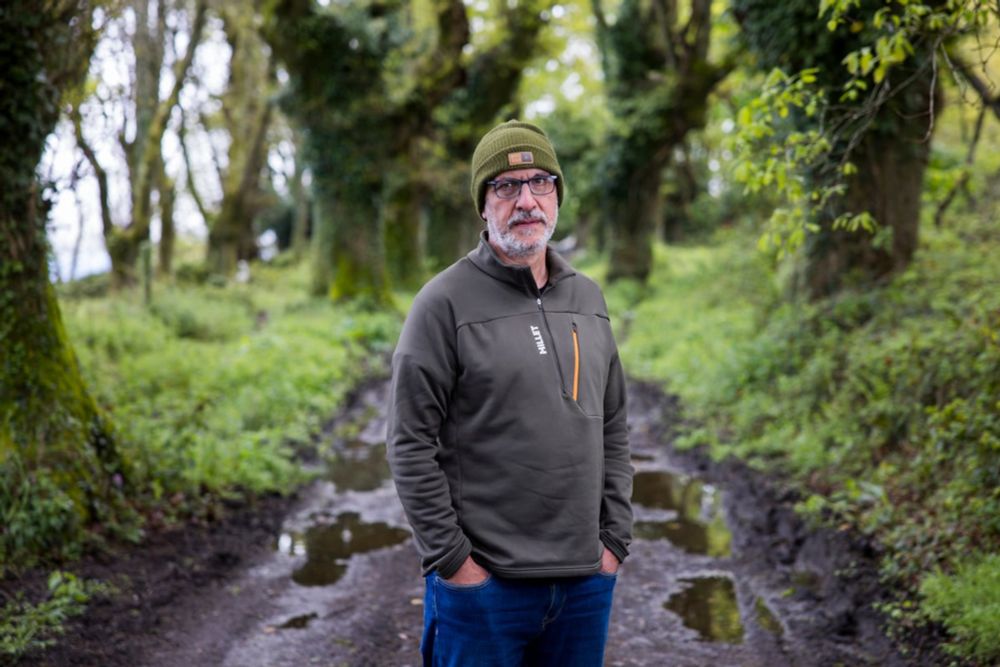
Lo dice bien claro hoy mi compañero @natcantabrica.bsky.social en una entrevista @elpais.com
elpais.com/clima-y-medi...




Some of the protagonists today were Scilla lilio-hyacinthus and the ubiquitous Primula (P. vulgaris, P. veris and P. x polyantha).




Some of the protagonists today were Scilla lilio-hyacinthus and the ubiquitous Primula (P. vulgaris, P. veris and P. x polyantha).
We could appreciate the diversity of our territory, starting with the mesic and temperate riparian, beech, and birch forests.



We could appreciate the diversity of our territory, starting with the mesic and temperate riparian, beech, and birch forests.


